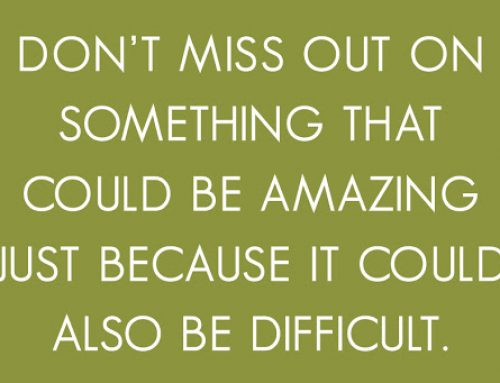The following is a review of a 2013 article published in the academic journal BookBird. This publication is dedicated to covering children’s literature with a focus on the international scene. The journal is produced by Johns Hopkins University in collaboration with the International Board on Books for Young children (IBBY). This article brings to our attention reading programs that are taking place in the United Kingdoms, The Netherlands, and …. It’s primary focus is the results of the 2009-2010 results from the program called “The Challenge” that was run by The Flemish Reading Association. On a side note- Flemish is spoken in Belgium and France. The primary target group of “The Challenge” reading program were students 15 years of age and older who are students in vocational education. The author of this paper, Dr. Fieke Van Der Gucht, who has been involved with The Challenge program since 2007. The reason I chose this article is because currently I am working as a library media specialist in a vocational high school. I found this article to be of interest since it brings light to a successful program that has been developed to encourage reluctant readers within the age group of students I am currently working with. Even though the program is run in European countries, this study provides helpful insights to incentive programs initiated with this target group.
In her introduction Dr. Van Der Gucht comes out directly to inform the readers the goals of this reading program- Reading for pleasure. Dr. Van Der Gucht brings to our attention two studies; the first from 2002 and the second from 2010. In 2002 the Organization for Economic Cooperation and Development published their annual report with some findings. This body of 30 member countries discusses and develops economic social policies. That year, their annual report concluded secondary school students who had better performance results often showed more enthusiasm for reading. Also they stated that being a frequent reader had more of an advantage than wealth and social status. Her second study from 2010 comes from Oxford University. She points out the correlation between reading for pleasure at a young age and better future job prospects as well as the development of leisure reading.
Dr. Van Der Grucht gives a very important definition for the purpose of her work. The Challenge works with “reluctant readers” in college. An important note is that unlike the USA, college in Europe already begins for students at age 15. For example in England students stay there for two years focusing on their A level exams. After college those who wish continue for another 3 years at University. Through her definition of her target group, we, the readers understand that “ The Challenge” is not a reading program aimed at students who have problems decoding words but rather those students who find this type of activity not fun or enjoyable.
As explained by Dr. Van Der Grucht, The Challenge’s main focus is to help instill a love of reading so that students can see that is is an enjoyable activity. To achieve their goal, the association recruits each time the program runs, between October and April, the aid of three celebrities such as News casters, sports players and entertainers. They help encourage the vocational students to read three book titles within a period of 6 months. The most important things that is stressed to participants is the fact that they can read any type of book. The Challenge has a well established marketing campaign that is delivered to their collaborating network of teachers and librarians with their target delivery market. Students have the ability to receive aid in selecting a certain book to read to ensure a positive reading experience.
The Challenge borrowed and collaborated with another program from the United Kingdom called Six Book Challenge developed by the Reading Agency. The British Reader’s Development Principles looks at the needs and habits of the students. The growing success of the efforts since 2009 enabled The Challenge to reach out and be implemented in Dutch vocational schools as well.
Dr. Van Der Grucht explains some of the principals of the Reader Development. She notes that the focus is increasing the confidence level and enjoyment of the reading activity. The focus is developing a reading experience that remains positive. It is also important to note that at no time are students judged by the quality of what they are reading since the focus is always to ensure a quality reading experience.
It was nice to see on page 69 how Dr. Van Der Grucht used one of the laws of librarianship developed by S. R. Ranganatham which supports reader-centered programs. To find the right book for the readers, one must know how will the student react to the book. The person reading the book will be influenced by “their personal history, prejudices, and the mood they happen to be in at the time they are reading”(Van der Gucht,2014 p.69). Reader Development program also requires us, the promoters of books, to be patient with readers especially if they tend to read same style. She notes that we must respect the readers choice but also encourage exploration. This I believe is the tough balancing act our profession requires.
I enjoyed her mentioning the expression “separating the wood from the tree” ((Van der Gucht,2014 p.69), in other words seeing the individual tree inside a vast forest.- Dr. Van Der Grucht mentions that often students become overwhelmed with the vast array of titles available to them and often might ignore and choose not to read just because of that problem. She notes that the toughest part of our job is actually getting the reader to grab a book and begin reading. On a side note, I used to attend conference both as an exhibitor and attendee. On one hand I would be fascinated when people would pass me by and ignore my booth. Yet, I knew that often I felt overwhelmed by all the stimulation that was around me at the professional conference that I just needed to escape to a quiet place. This is what Van der Gucht is mentioning when she mentions that the students may be over stimulated by choice and they are not able to concentrate on just one particular title to connect with and read. One can have a similar experience when going to a fine restaurant where the menu is overwhelming with choices just for seafood dishes. Yet you, as the person who is supposed to choose just one item to eat, become frustrated and not even find a meal you can appreciate. This is the same type of experience students might go through at a library when faced with overwhelming choices of titles to read.
Dr. Van Der Grucht looks at reading, from the student’s perspective, as just another hobby that they prefer not to do because it is challenging. In the world of gamification flow theory is the concept that states that activities that are in balance between difficulty and skill are creating a state of flow. This theory was introduced by Mihaly Csikszentmhalyl. (Csikszentmihalyi, 1997). He states that when we are in a state that things are not too easy and not too difficult, and require us to work and challenge ourselves we would want to be there. This I believe is also the perfect condition we can find when we are able to bring readers to find a book that is not boring since it’s too easy and on the same time not to difficult because there are too many words they do not know and do not wish to work on understanding it since it might be frustrating.
This is one of the reasons this reading program is called The Challenge. The UK Six Book program worked with adults with low literacy as opposed to The Challenge. Their audience was in places such as prisons, libraries, and work. The Six Book program has a prize component. Participants are able to read other types of media such as: magazines, newspapers, online websites, and interact in digital games (at times these online games require to read conversations in multi player forums).
Sine 2009 8,265 vocational students have participated in The Challenge that was adapted (in consultation) from what was done earlier by The Reading Agency. 46% of participants have managed to read 3 books. 72% finished one title. Often students join because they are attracted by the celebrities. The Challenge did keep an individual prize scheme to those who read all three books but also added a chance for a class to have a prize that is a visit by the celebrity.
Participants in The Challenge are able to access helpful websites to choose a book based on their own personality. ( Since the site was in Flemish or Dutch, I could not understand it) The search engine allows students to search for books based on their own habits, moods and interests. I thought this was a great idea. Teachers and librarians had another website where they can download guide to assist in implementing The Challenge. The site also offer help finding title for those with hi-lo needs. Another website is set up with audio visual material where the celebrities share their reading experiences. Directly on the website students can sign up to take The Challenge. They enter the book title as they read them. On the website they can do several activities such as: leave comments and share the experience of reading the book.
One thing that I was having difficulty with is the prize angle of the book reading. In other papers I have read (Kohn, 1999) I found that when the reward is not there often the primary objective is not continued. However, Dr. Van Der Grucht explains that the prize is just an added stimulus. She notes that enjoyment of reading leads to freedom of book choice and thus behavioral change.
The first challenge in 2009 had 62% female vs. 38% male. That year 6806 title were read by 3,839 participants where 45% had personalized help finding the book. Only 28% did not complete any of The Challenge. 72% read at least one book. An exit survey asked reader if they considered themselves reluctant readers. 48% claimed to read 5-6 books a year, 52% said they hardly read 1-2 books a year. Most of the students had fun doing The Challenge and 69% were determined to keep on reading. 26% considered it while 5% said they will never read again (Sad). In 2009 the Twilight series titles were most popular choice followed by other books that were adapted to movies.
This summer in Information Resources and Competencies for Youth with Dr. Renee Hobbs course LSC 531 we read Book Love by Penny Kittle (2013). In her book she describes a different method t instill a love of reading in students who are reluctant readers. I am planning on implementing some of the anecdotes I read in the book through a pilot project I am co running in the 2014-2015 school year with the vocation high school I am working in.
The audience of this paper is broad. I believe it is useful for those of us who work directly with reluctant readers. This means that librarians, teacher, administrators, parents and others policy makers can find this information very useful. I believe the author would like to change the opinions of the “ Nay Sayers” that you can indeed get kids back to the activity that is independent reading. I believe there is much light that is presented in this paper and I enjoyed finding an article that helps support the type of high school I cam currently involved with. I believe it can be useful for me. I do believe there are many unanswered questions. Not everyone can run a reading program with celebrities to assist and motivate get the results we see here. I believe this is a great starting point to work on refining the program in the same way Dr. Van Der Gucht had done when she borrowed what worked from the UK program.
Reference:
Csikszentmihalyi, M. (1997). Finding flow: The psychology of engagement with everyday life. Basic Books.
Kittle, P. (2013). Book love: Developing depth, stamina, and passion in adolescent readers. Heinemann.
Kohn, A. (1999). Punished by rewards: The trouble with gold stars, incentive plans, A’s, praise, and other bribes. Houghton Mifflin Harcourt.
Van der Gucht, F. (2014). The Challenge: A Reader-Centered Programme for Young Adults in Vocational Colleges. Bookbird: A Journal of International Children’s Literature, 51(4), 68-73.

























